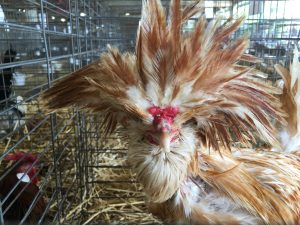If you tuned in for my post on Quantitative Philosophy, you may recall my promise to provide mathematical models for segments of the human experience. This is indeed once such model. If you’re here looking for another post on how I find the business world’s systems of reinforcement incongruous with the results they ultimately condition, this is not that post. Although, perhaps later I’ll dive into how the merit raises work.
But nay, I shall start with a model based on the most human of characteristics–one which requires the highest of brain function–humor. Indeed, I found the concept difficult to describe, as its existence relies upon the prerequisites of feeling and emotion–two other concepts difficult to comprehend, though simple to attribute to species survival. Quite simply, humor is but an extension upon these concepts, so we can begin there.
Emotions are, in their most primal form, reactions to stimuli, which influence actions geared to keep us alive. Survival requirements, and their respective order of requisition, were famously defined in Maslow’s Hierarchy of Needs:
- Air/Water/Food (physiological needs)
- Physical safety
- Social belonging/love
- Self-esteem
- Self actualization/Purpose
With the heightened awareness that sentience allows, humanity needed a coping mechanism for when one of these needs is threatened, so as to keep the brain from experiencing a stress-related shutdown. Enter: humor–a positive emotional reaction of levity as a reaction to understanding a perceived threat to one of these needs. I say perceived, because once a need is actually threatened, we need a stress reaction to manage the crisis quickly–something that is demonstrably not a positive feel-good reaction.
How do I know this? For one, I am human (though others may debate this claim). And two, because the substance of a joke invariably falls into two criteria: Social Commentary and Historical Reference. These two concepts, by definition, invoke failures of humanity, not triumphs. Granted, a joke may contain widely variable substance in these categories.
Let’s analyze a joke for context:
‘Why did the chicken cross the road?’
‘Why?’
‘To get to the other side.’
 The joke, most simple in form evokes feeling. The recipient of the joke wonders about that chicken. The chicken has an objective. The chicken has become anthropomorphized. We feel for that chicken. We want to know about that chicken and why it felt the need to cross that road. This is social commentary.
The joke, most simple in form evokes feeling. The recipient of the joke wonders about that chicken. The chicken has an objective. The chicken has become anthropomorphized. We feel for that chicken. We want to know about that chicken and why it felt the need to cross that road. This is social commentary.
Also, it contains historical reference. We need to understand what a road is–an invention of humanity based on the need to service other inventions. And, historically, we all know that animals crossing roads may be perilous to their health.
And that, is the threat necessary for the humor trigger: the chicken is having one of its needs jeopardized. Its physical safety is in danger.

Alas, no harm befalls this chicken. We never learn why it felt compelled to cross the road, nor do we learn of its fate. We laugh over these unresolved questions, while understanding that the hook of the story relied upon that chicken’s mortality, and by extension, our own.
But this alone does not make the joke. It is merely a story. To become a joke, it requires two other aspects: Delivery, and Satirical Value. We wait, momentarily on edge, eagerly seeking the story’s climax. So the wording of the joke affects it’s delivery. It’s phrased in a question to invoke the listener’s interest and encourages his/her reaction. Secondly, the conclusion of the joke is mere satire, or in this case specifically, irony. It’s ironic that the story’s conclusion has nothing to do with the actions of the perceived feelings of the chicken. It simply wanted to get from point A to point B–something completely uninteresting. We are left without any compelling narrative, despite the initial impression of one, and that’s ironic.
Formula
To quantify humor then, we take the base substance of a joke, the Social Commentary and Historical Reference, and add them. We take this combined substance, and append the joke’s Delivery and Satirical Value as multipliers:
(Delivery*Satirical Value(Social Commentary+Historical Reference))/20
In this manner, we find jokes can have varying degrees of each category, but the funniest jokes always find ways to maximize each. Additionally, no criteria can be rated to have a null value, as any joke will always contain even the smallest quantity of each, and each criteria can receive a maximum score of 10. The total score ranges from 1-100 (technically 0.1-100), so we scale for the theoretical maximum by dividing by 20. For the above referenced joke, I have rated it a 10:
(5*8(3+2))/20
Granted these are arbitrary scores, but I find that gut reactions in this instance are the most accurate, seeing as, after all, we are attempting to quantify an emotional response. I’ve included a link to download the calculator, which further explains how to score a joke as well as automatically completing the math:
https://moorheadfamily.net/data/Humor%20Quotient.xlsx
Are our bio-mechanical systems so readily quantifiable? You be the judge. And if nothing else, I hope you found this post funny.
–Simon
